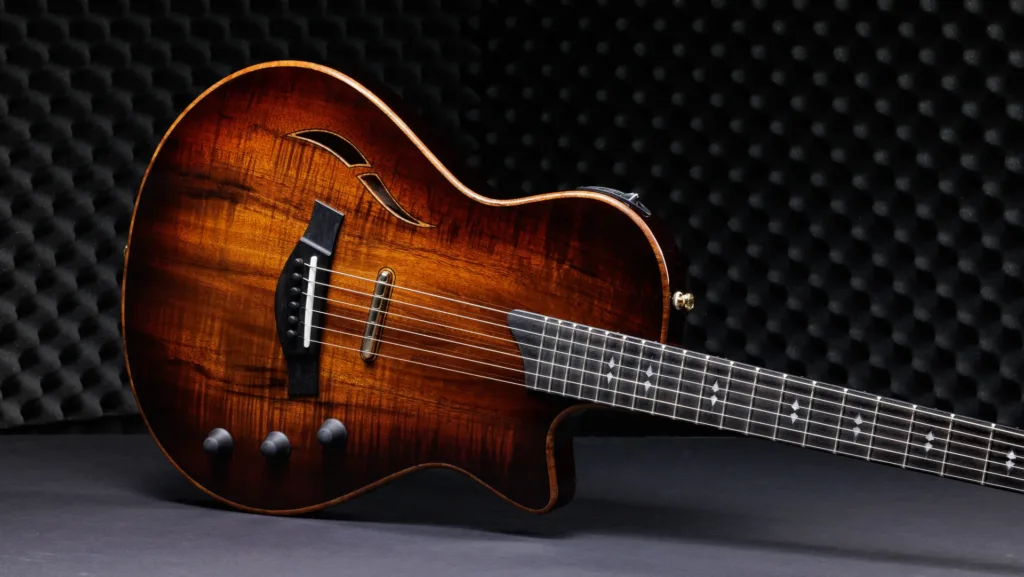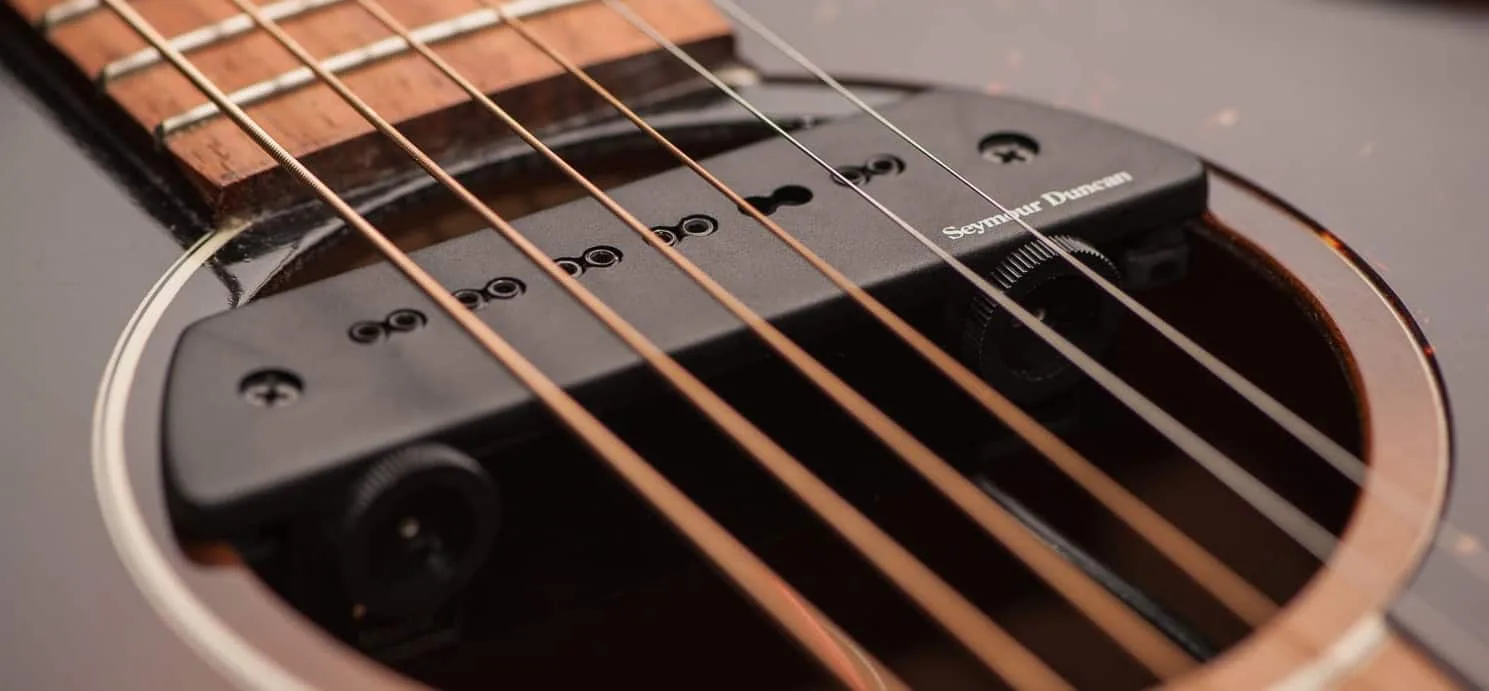Have you ever looked at a guitar and wondered, “How many strings does it have?” If you’re new to the world of music and just starting to explore the art of playing guitar, this question may be on your mind. Don’t worry, you’re not alone! I remember being in your shoes when I first picked up a guitar- completely clueless about how many strings it had and what they were used for.
In this article, we’ll answer all your questions about the number of strings on a guitar. We’ll also delve into why guitars have different numbers of strings and how that affects their sound and playability. Whether you’re interested in learning acoustic or electric guitar, by the end of this article, you’ll have a better understanding of how many strings do guitars have and why it matters for your musical journey! So let’s get started on unraveling the mystery behind those six (or sometimes more) strings!
So, how many strings do guitars have?
Most guitars have six strings, but there are also seven and twelve-string variations. The standard guitar tuning is E-A-D-G-B-E, with the thickest string being the low E and the thinnest string being the high E. However, some players may choose to tune their guitar differently depending on their playing style or genre of music.
The strings on a guitar are responsible for producing different notes when plucked or strummed. Each string is tuned to a specific pitch, with thicker strings producing lower notes and thinner strings producing higher notes.
For beginners learning how to play guitar, it’s important to understand how each string contributes to creating chords and melodies. By practicing proper finger placement and strumming techniques on each individual string, one can become more proficient in playing songs and developing their own unique sound.
It’s worth noting that while most guitars have six strings, there are other types of guitars that have more or less than six strings such as bass guitars (typically 4-5), tenor guitars (usually 4), and harp guitars (upwards of 10-12). These variations offer different ranges of sound and allow musicians to experiment with new styles of music.
Understanding the number of strings on your guitar is crucial for learning how to play effectively. Whether you’re starting out with a traditional six-string acoustic or trying out something new like a seven-string electric guitar, mastering each individual string will help you develop your skills as a musician. So pick up your instrument and start exploring all the musical possibilities!
Understanding the Standard Six-String Guitar: A Deep Dive into Its Structure and Sound
The World of the Six-String Guitar
Dive deep into the mesmerizing world of the six-string guitar, a charming instrument known for its unique structure and captivating sound. A standard six-string guitar, stratified into three main components – the body, neck, and headstock, owns a design that’s simple yet sophisticated in every sense.
The dazzling essence of its body rests on two crucial elements – the top (soundboard) and the back/sides. The top serves as an integral part where vibrations from plucked strings are transferred to air thus producing sound. It gets more interesting with different types of wood like spruce or cedar used for tops influencing the overall tone. Similarly, variations in material used for back/sides – be it mahogany or rosewood imparts distinctive resonance making each guitar’s voice unique.
Six Strings: The Soulful Symphony
Delving further down this fascinating path leads us to an understanding of those enchanting strings which give life to a guitar’s symphony. These six steel lines are anchored at one end by the bridge located on the body while their other ends wind around tuning pegs at the headstock.
- The thickest string also called ‘low E’, emits lowest pitch.
- The next thicker ones follow suit ‘A’, ‘D’ and ‘G.’
- ‘B’ is second thinnest while ‘high E’ being thinnest produces highest pitch.
Such diverse thicknesses attribute different pitches enabling wide range music creation stirred up by fingers dancing across these strings! Tuned traditionally in ascending order-EADGBE-this configuration aids in playing multitude chords giving birth to variety rhythms.Together they all form not just any musical instrument but rather,a poet’s pen crafting melodious verses in the realm of music.
Exploring Different Types of Guitars: Acoustic, Electric, and Beyond
Guitars are amazing instruments, capable of producing a variety of sounds and being used in countless genres and styles of music. They come in different shapes, sizes, colors and types; each with its unique charm and sound characteristics. There are essentially three common types: Acoustic, Electric, and the lesser-known but equally fascinating, Bass guitar.
The Acoustic Guitar, often associated with folk or country music, provides an organic sound that is both warm and resonating. The hollow body amplifies the vibration from the strings which creates this signature tone. Acoustic guitars can vary greatly in terms of size – some may be small enough to take along on hikes while others require a bit more space. For added versatility, there are also acoustic-electric hybrids available.
- Dreadnought: It’s large-sized guitar known for loudness.
- Auditorium: Its medium sized well balanced for fingerpicking.
- Jumbo: Famously used by Elvis Presley noted for its bright tone.
On the other end of the spectrum lies the electric counterpart – The Electric Guitar. These beauties rely on electronic pickups to convert string vibrations into electrical signals which then get amplified through speakers. Electric guitars have a sleeker design allowing players to reach higher notes effortlessly.They’re commonly used in rock’n’roll or heavy metal due to their ability to produce louder volumes without distortion.
- Solid Body: This type has no resonance chamber so all sound comes from electronics.
- Hollow Body: This variant takes inspiration from acoustics & can still create noise even unplugged.
- Semi-Hollow Body: This design mixes characteristics of the other two.
Then there is The Bass Guitar, less talked about, but just as vital in any music ensemble. Boasting a longer neck and thicker strings than its counterparts, this guitar produces low frequency tones that provide depth to any musical piece.
Read also: how many strings do guitars have
Why Do Some Guitars Have More Strings? The 7, 8, and even 12-String Variations Explained
The number of strings on a guitar can greatly affect its sound and how it’s played. For example, the typical six-string guitar is versatile and common, but guitars with seven, eight or even twelve strings offer unique tonal possibilities that are not achievable with only six. Let’s dive into why these variations exist.
A classic six-string guitar has a wide range of notes to play – from low E to high E, which fits most musical styles. But some musicians crave more depth and breadth in their music. Enter multi-string guitars! The 7-string version, popular among jazz and metal players, adds an extra note in the bass range for heavier riffs or complex chord voicings. In contrast, The 8-string variation gives even more room for creativity by adding yet another lower string.
Moving onto the delicately rich world of the 12-string guitar. This variant pairs each standard string with another usually tuned one octave higher (except for two highest strings which are paired in unison). The result? A lush chorus-like effect that is deeply resonant and melodious. It’s especially favoured by folk musicians who appreciate its distinctive jangly sound.
- Summary:
- A regular 6-string covers most needs.
- A 7-String allows deeper tones / complex chords.
- An 8-String extends creative options further into bass territory.
- A 12-String provides richer sounds due to paired strings at various octaves/unison.
In conclusion: all these variants cater to different musical styles/genres offering artists unique ways to express their musicality.

The Impact of String Number on Playing Style: Techniques for Various String Configurations
The Impact of String Number on Playing Style is a fascinating topic that dives into the depth and subtleties of musical artistry. It’s intriguing to observe how each string on an instrument, like a guitar or violin, can uniquely shape the player’s style and technique.
Guitars typically have six strings but some models come with seven or even 12 strings! For example, a twelve-string guitar creates rich harmonic resonances which can generate an almost orchestral sound. However, this type of configuration demands distinct playing techniques – chords must be strummed rather than picked because picking individual strings becomes more challenging due to their closeness in proximity.
- Seven-string guitars, common in jazz and heavy metal music genres offer another layer of complexity and versatility. The extra string extends the range allowing players to explore deeper bass tones without having to detune their guitars.
- If we shift our focus towards different instruments like violins, traditionally they have four strings. Nevertheless, five-stringed violins are gaining popularity as they expand the tonal range by adding either an additional lower or higher pitched string.
- Instruments such as sitars may carry up to18-21 strings! This significantly impacts playing techniques; musicians need precision finger placement not only for notes but also rhythmic drones created by sympathetic vibrations from ‘untouched’ secondary strings.
In conclusion, the number of strings has substantial implications for instrumentalists’ performances influencing both technical necessities as well as creative potentialities.
You may also like: u2 yamaha piano price
Why Knowing Your Guitar’s String Count Matters in Music Making
Understanding the significance of your guitar’s string count in music making is a fundamental aspect that every budding guitarist must embrace. Not to simply appear knowledgeable, but because it genuinely impacts your music style and sound quality. Having a standard six-string acoustic or electric guitar will give you access to creating virtually any genre of music from classical, rock, blues through to country; they are versatile and widely used across all skill levels. But have you ever stopped for a moment and wondered about those other types? Like the 12-string guitars with their rich, jangly tones perfect for generating ethereal harmonies and resonant folk-style songs? Or the deep resonating bass produced by four-stringed bass guitars crucial in setting rhythm in band performances?
The number of strings on your guitar matters as it ultimately influences the range of notes capable of being played by an instrument – this directly affects melody creation, rhythm generation and even bass control.
- A 6-string guitar is ideal if you want versatility across many genres,
- a 4-string Bass offers fewer note variations but adds depth necessary for rhythm stability,
- while a 12-string provides twice as many vibrations giving that lush, full-bodied sound.
So next time when choosing between different guitars remember: each extra string adds another dimension to your musical experience – expanding possibilities yet requiring additional mastery over technique. It’s not just about knowing how many strings there are on your chosen instrument; it’s understanding what these numbers translate into musically that truly makes a difference.

